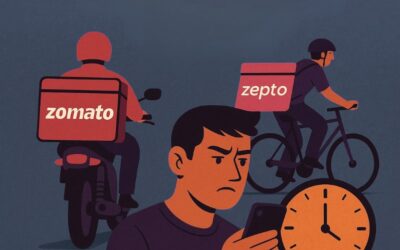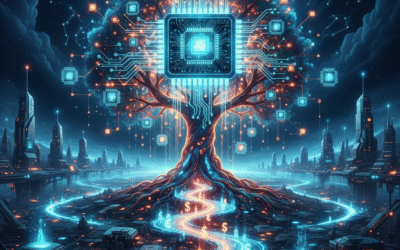The 180 Pulse
With thought-provoking articles covering varied domains, 180DC SRCC aims to create student leaders through a holistic learning experience.
Read to take a deep dive into looking at world issues from the eyes of a consultant.
BUSINESS AND FINANCE
Pay Later, Pay More? The Hidden Costs and Risks of ‘Buy Now, Pay Later’ Services
Buy Now, Pay Later (BNPL) has reshaped online shopping by making purchases feel lighter through small “interest-free” instalments. This reduces the immediate pain of paying and encourages impulse spending, especially among younger consumers influenced by peers and social media.
For many with irregular incomes, BNPL offers short-term flexibility, but often at a long-term price. Hidden fees, penalties for missed deadlines, and confusing terms can quietly turn convenience into debt. With inconsistent credit reporting and limited regulation, users may unknowingly harm their credit health.
BNPL isn’t inherently bad, but it demands caution. Before clicking “Pay Later”, pause and ask yourself: Do I truly need it and can I manage the instalments that follow? Read this article by Ridhima Dugar to discover the full story.
The AI Bubble: Why $2.8 Trillion in Spending Can’t Find a Profit
The AI boom raises a natural question: why has investment exploded so far ahead of real returns? Trillions are being poured into data centres and chips, yet revenue growth remains limited and most enterprise pilots fail to scale. This creates uncertainty about whether the moment reflects true technological progress or another speculative cycle similar to the late-1990s telecom overbuild.
Financial institutions now warn that valuations look overstretched and productivity gains remain modest. The conclusion that emerges is clear: only disciplined capital allocation, careful use-case selection, strong governance, and staged execution can convert AI’s potential into sustainable value.
Find out in Aviral Kapoor’s article how disciplined strategy, not speculation, will define AI’s real winners.
What if the real cost of convenience isn’t just financial, but societal?
What if the real cost of convenience isn’t just financial, but societal?
In a world where groceries arrive in 10 minutes, our patience is shrinking, and our expectations are skyrocketing. Platforms like Blinkit, Zepto, and Instamart promise time saved, but at what cost?
This article explores the deeper implications of India’s ultrafast delivery model, ranging from environmental degradation and worker exploitation to unsustainable business practices and the gradual disappearance of local shops. Backed by hard numbers and real-world evidence, it challenges the assumption that faster is always better and asks whether our pursuit of convenience is rewiring the way we live, consume, and connect.
Find out in Kevika’s article whether it is time to slow down and rethink what “convenient” really means?
SCIENCE AND TECHNOLOGY
Is AI Ironically Killing Productivity?
The excitement surrounding AI adoption is natural due to its remarkable capabilities. It can summarise documents, analyse data, generate marketing content and much more in just a matter of seconds. Companies expected this to free their employees from mundane, repetitive tasks, allowing them to focus on creativity and innovation.
However, it has resulted in a rather disappointing trend in workplaces, i.e. AI-led inefficiency. The enthusiasm can be clearly seen in the sky-high valuations and inflow of investments in the AI space. However, there is a paucity of encouraging outcomes.
The gap in the expectation and the reality of AI-led productivity is not because AI as a tool is completely ineffective. It is, in fact, due to ineffective use of technology in the workplace for a myriad of reasons.
Read Kashvi’s article to discover the entire story.
Is Choice an Illusion in the Age of Recommendation Algorithms?
What if the choices we think we’re making online aren’t really ours?
From Netflix’s “Top Picks for You” to YouTube’s autoplay and TikTok’s endless scroll, recommendation algorithms are quietly shaping what we watch, listen to, and even believe. On the surface, it feels like freedom. In reality, our digital paths are being curated behind the scenes with profit, not preference, as the compass.
Read this article by Aarushi Goyal as she unpacks how algorithms engineer our decisions, blurring the line between free will and programmed behaviour. It explores whether “choice” in the digital age is a genuine act of agency or an illusion created by invisible systems.
Is Smartphone Innovation Dead?
Smartphone innovation isn’t what it used to be. While foldables, AI tools, and high-megapixel cameras may seem exciting, most of today’s upgrades feel more like tweaks than true transformations.
With users holding on to their devices longer and annual launches becoming increasingly predictable, a question arises is real smartphone innovation fading? What defines meaningful innovation in today’s mobile era? Are we nearing the end of the smartphone’s dominance, or on the verge of something entirely new?
Explore these pressing questions in Aryan Maheshwari’s article as he examines the stagnation in smartphone evolution and the emerging promise of smart wearables and multimodal AI could this be the beginning of a new tech era?
ECONOMIC AND PUBLIC POLICY
The Shadow Economy: Unmasking the Global Mechanics of Money Laundering
Money laundering is often seen as a distant, sophisticated crime, but it silently shapes global finance, fuels terrorism, and distorts economies. From shell companies and crypto wallets to false invoicing and deepfake identities, the methods have become smarter, faster, and harder to trace.
Despite strong laws and global frameworks, only a tiny fraction of illicit flows are ever detected. Regulatory gaps, weak data systems, and cross-border loopholes keep the shadow economy alive.
Money laundering isn’t just a financial crime; it’s a threat to governance, stability, and everyday economic fairness. Explore the full analysis in Madhav’s article.
Why are “Chips” the New Oil?
Semiconductors have quietly become the strategic backbone of the 21st century, powering everything from artificial intelligence and electric vehicles to defence, communication, and critical infrastructure. Their significance became undeniable when the global chip shortage revealed how dependent the world is on a fragile supply chain concentrated in only a few places.
With Taiwan manufacturing most of the world’s advanced chips, the U.S.-China technology rivalry has escalated, pushing countries to prioritise security, self-reliance, and strategic investment in chip ecosystems.
As Moore’s Law slows, breakthroughs are shifting toward advanced packaging, heterogeneous integration, and specialised chip design, making talent, innovation, and geopolitical stability more vital than ever. Discover the full story in Rushil’s article.
The Price of Protectionism
The article provides an in-depth analysis of the 2025 US-China trade war, where both nations have reignited tariff battles targeting critical sectors like semiconductors, EV batteries, agriculture, and luxury goods. It explains how this renewed conflict is disrupting global supply chains, pushing major companies to shift manufacturing to countries like India, Vietnam, Mexico, and Thailand. The article also highlights China’s growing trade alliances with Africa and Latin America, the expansion of regional trade blocs like RCEP and IPEF, and the increasing push towards de-dollarization through yuan-based trade settlements and BRICS-led payment systems.
Check out this article by Divyanshu Jha as he emphasizes that sustainable global growth now depends on renewed multilateral cooperation, transparent trade practices, and a strategic shift from zero-sum competition to mutual interdependence.
Philosophy and Psychology
Asymptote of Enough
What if the real burnout isn’t just in our bodies but in our idea of success? From school report cards to job promotions, we are conditioned to chase more — more success, more visibility, more validation. But at what cost?
This article explores how the modern rat race driven by unexamined ambition and constant comparison is taking a toll on our well being, purpose, and peace.
Is it time to redefine what enough really means?
Read this insightful article by Jahnvi Bansal as she questions the existing systems and offers a path toward more meaningful metrics of success.
The Halo and Horn Effects: How One Trait Shapes Our Judgments
Our initial impressions often hold more power than we realise. A firm handshake, articulate speech, or a confident introduction can lead us to overestimate a person’s abilities. Conversely, a single misstep may unfairly overshadow their true potential. These cognitive shortcuts, known as the Halo and Horn effects, deeply influence our decisions in workplaces, classrooms, and even the marketplace.
Such biases can result in unfair hiring, skewed evaluations, and poor consumer choices. But with greater awareness and structured methods like blind assessments, rotational reviews, and self-reflection, we can reduce their impact and make more objective, evidence-based judgments.
In this piece, Chinmay Chirag explores how one trait can shape our entire perception of a person and shares clear, actionable ways to overcome these hidden biases in high-stakes environments.
The Paradox of Choice: Does More Freedom Make Us Less Happy?
The Paradox of Choice: Is Too Much Freedom Making Us Unhappy?
We live in a world overflowing with options: internships, career paths, products, even identities. While this abundance promises freedom, it often leads to decision fatigue, anxiety, and second-guessing.
Psychologist Barry Schwartz calls this the Paradox of Choice: when having too many options makes us less happy, not more.
But what if the answer lies in thinking like a consultant? By using structured tools, frameworks and constraints, we can cut through the noise, make better choices and feel more confident.
Check out Aditya Duggal’s article as he delves deep into the Paradox of Choice and explores how applying consulting principles to everyday life can help navigate complexity and bring clarity.












